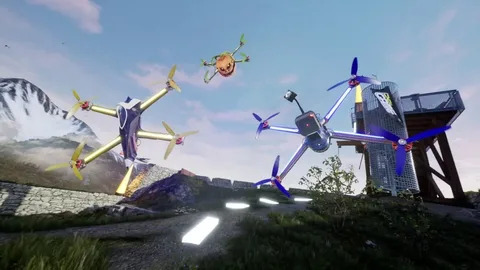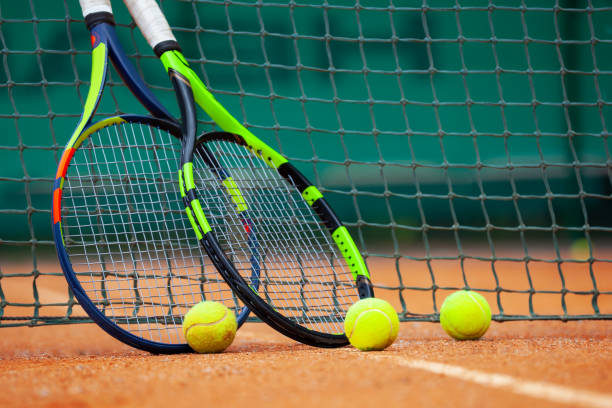The Drone Champions League (DCL) has rapidly gained traction as one of the most exciting and competitive drone racing leagues in the world. Whether you’re an aspiring drone pilot or a seasoned racer, developing a solid strategy is essential to succeeding in this high-stakes competition. The DCL combines speed, agility, and precision, pushing pilots and their drones to the limits. To stand out in this league, you need more than just fast reflexes and a powerful drone; you need a winning strategy.
In this comprehensive guide, we’ll walk you through the key elements of building a strategy that can help you dominate the Drone Champions League. From understanding race dynamics to fine-tuning your drone’s performance, here’s everything you need to know.
1. Understand the DCL Format and Rules
Before diving into strategy, it’s crucial to have a thorough understanding of the Drone Champions League format and rules. Each DCL race features multiple stages, including time trials, knockout rounds, and team races. Knowing how each stage works and the specific rules that apply can give you a competitive edge.
Key aspects to focus on:
- Race types: DCL features individual time trials, head-to-head knockout races, and team events. Each type requires a different approach.
- Track layout: DCL tracks are known for their challenging designs, often set in iconic locations with unique obstacles. Familiarize yourself with common track elements like tight turns, gates, and tunnels.
- Penalty system: Understand the penalties for crashing, missing gates, or violating race regulations. A single mistake can cost you valuable time or even disqualify you from a race.
By mastering the DCL format and rules, you can tailor your strategy to maximize your strengths and minimize potential risks.
2. Optimize Your Drone’s Performance
Your drone is your most valuable asset in the Drone Champions League. Ensuring it’s optimized for both speed and agility can make a significant difference in your performance. Here are some key areas to focus on when setting up your drone:
a. Choose the Right Frame
The frame of your drone plays a critical role in its durability and aerodynamics. For DCL races, opt for lightweight, durable frames made of carbon fiber. These frames provide a good balance between speed and stability, allowing you to navigate tight corners without sacrificing control.
b. Select High-Performance Motors and Propellers
Motors and propellers determine your drone’s thrust and maneuverability. For DCL races, choose high-RPM motors paired with efficient propellers that provide optimal thrust-to-weight ratio. This setup will give you the acceleration and agility needed to stay competitive.
c. Tune Your Flight Controller
Fine-tuning your flight controller settings can greatly enhance your drone’s responsiveness. Adjust the PID (Proportional, Integral, Derivative) settings to suit your flying style and the specific track conditions. Practice with different settings to find the perfect balance between stability and agility.
d. Battery Management
Managing your drone’s battery is crucial for sustaining power throughout a race. Choose high-capacity, high-discharge rate LiPo (Lithium Polymer) batteries that can handle the demands of competitive racing. Additionally, practice efficient throttle management to conserve battery life during longer races.
3. Master Your Flying Skills
Even with the best drone, success in the DCL ultimately comes down to your piloting skills. The world’s top drone pilots dedicate countless hours to honing their reflexes and precision flying. Here’s how you can elevate your skills to a competitive level:
a. Practice on DCL Tracks in the Simulator
One of the best ways to improve your flying skills is by using DCL – The Game, the official simulator for the Drone Champions League. The simulator features realistic physics and actual DCL tracks, allowing you to practice in a controlled environment.
Benefits of using a simulator:
- Get familiar with the layout of real DCL tracks.
- Practice racing lines and cornering techniques.
- Experiment with different drone setups without risking damage to your actual drone.
- Improve muscle memory and reaction times.
b. Focus on Throttle Control
Precise throttle control is essential for navigating DCL’s challenging courses. Practice using gradual throttle adjustments to maintain a smooth flight path and avoid overcorrecting. This is especially important when flying through tight gates and tunnels.
c. Learn Advanced Maneuvers
To gain an edge over your competition, master advanced maneuvers like split-s turns, power loops, and inverted yaw spins. These techniques can help you maintain speed while making sharp turns, allowing you to shave valuable seconds off your lap times.
4. Develop a Race Strategy
In the Drone Champions League, having a well-thought-out race strategy is just as important as raw flying skills. A solid strategy can help you outperform competitors, especially in high-pressure situations.
a. Analyze the Track Beforehand
Each DCL track has its own unique challenges, so it’s essential to analyze the track layout before the race. Study previous race footage, use the DCL simulator, or take advantage of practice sessions to familiarize yourself with the track’s twists and turns.
Track analysis tips:
- Identify high-speed sections where you can push for maximum speed.
- Pinpoint tricky sections that require precise maneuvering to avoid crashes.
- Plan your racing lines to minimize drag and maximize speed.
b. Plan Your Overtaking Strategy
Overtaking opponents in drone racing is a delicate balance between aggression and caution. Develop an overtaking strategy that allows you to pass competitors without risking a crash. Look for overtaking opportunities on straight sections or wide corners where there’s more room to maneuver.
c. Adapt to Changing Conditions
DCL races are often held in diverse environments, which can introduce challenges like wind, rain, or low light conditions. Be prepared to adjust your strategy on the fly based on weather and track conditions. For example, reduce your speed in windy conditions to maintain control, or use LEDs to improve visibility in low light.
5. Work on Team Coordination (for Team Events)
In addition to individual races, the Drone Champions League features team-based events where coordination with your teammates is crucial. A successful team strategy can give you a significant advantage in these races.
a. Communication is Key
Clear communication with your team members is essential for coordinating overtakes, avoiding collisions, and planning tactics. Use radio headsets to stay in constant contact with your team during races.
b. Assign Specific Roles
Assigning roles within your team can help optimize performance. For example:
- Lead pilot: Sets the pace and clears the way for other team members.
- Support pilot: Focuses on defending against opponents and creating opportunities for the lead pilot.
- Strategist: Monitors race progress and provides real-time feedback on tactics.
c. Practice Team Formations
Practicing coordinated maneuvers and formations with your team can improve overall efficiency and reduce the risk of collisions. This is particularly useful in tight sections of the track where multiple drones are competing for space.
6. Mental Preparation and Focus
Drone racing is not only a physical challenge but also a mental one. The pressure of competing in the Drone Champions League can be intense, and maintaining focus is crucial for success.
a. Stay Calm Under Pressure
High-stakes races can trigger adrenaline, which may lead to mistakes if not managed properly. Practice breathing techniques and visualization exercises to stay calm and focused during races.
b. Set Realistic Goals
Setting achievable goals can help you stay motivated and track your progress. Focus on continuous improvement, whether it’s shaving seconds off your lap times or perfecting a specific maneuver.
c. Review Your Performance
After each race, review your performance to identify areas for improvement. Watch race replays, analyze your racing lines, and take note of any mistakes. This self-assessment will help you refine your strategy for future races.
Conclusion
Building a winning strategy for the Drone Champions League requires a combination of technical skills, drone optimization, strategic planning, and mental resilience. By understanding the league’s format, mastering your drone, honing your piloting skills, and developing a solid race strategy, you can increase your chances of success in this highly competitive sport.
Remember, the road to becoming a top DCL pilot is a marathon, not a sprint. Dedicate time to practice, learn from your mistakes, and continuously refine your strategy. With the right approach, you can not only compete but also excel in the thrilling world of drone racing.




